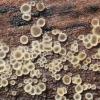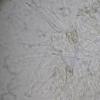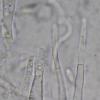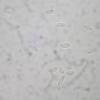
04-01-2026 17:45
 Stephen Martin Mifsud
Stephen Martin Mifsud
I was happy to find these orange asmocyetes which

03-01-2026 13:08
Niek SchrierHi all,We found groups of perithecia on a Lecanora

29-12-2025 17:44
Isabelle CharissouBonjour,J'aimerais savoir si d'autres personnes au

02-01-2026 17:43
MARICEL PATINOHi there, although I couldn't see the fruitbody, I

01-01-2026 18:35
Original loamy soil aside a artificial lake.The co

31-12-2025 19:27
Collected from loamy soil, at waterside (completel
I would like to have your opinion to this Hyaloscypha(?) species. Could it be H. fuckelii ssp. fuckelii?
Substrate: Deciduous wood, probably Fraxinus
Macroscopic description:
Apothecia mostly 0.6-0.8 mm in diameter. Color whiteish translucent to somewhat yellowish/ochre. Margin with conspicuous hairs.
Microscopic description:
Asci 35-45 x 6-7 µm, pleurorhynch, pore amyloid. Paraphyses filiform with 2-2.5 µm diameter and sometimes slightly broder at apex. Spores variable in size and shape, mostly ellipsoid with two small drops, 6-9 x 2-2.5. Hairs straight or slightly sinuous, I measured up to 90 µm in length, basal cells slightly brownish (see photos).
Thank you for any help
Stefan

that is Protounguicularia barbata (= Olla transiens).
The partially present glassy tips of the hairs are typical, also the spores and their droplets. The asci should be simple-septae but with basal protuberances.
Zotto
Thanks a lot for your identification! Is this glassy tip the only character to separate Olla/Protounguicularia from Hyaloscypha species?
Stefan

Maybe it is genetically clearly different. I thought the species should belong in Olla, but that was also not the best idea, the differences are too great...
Zotto
Stefan








